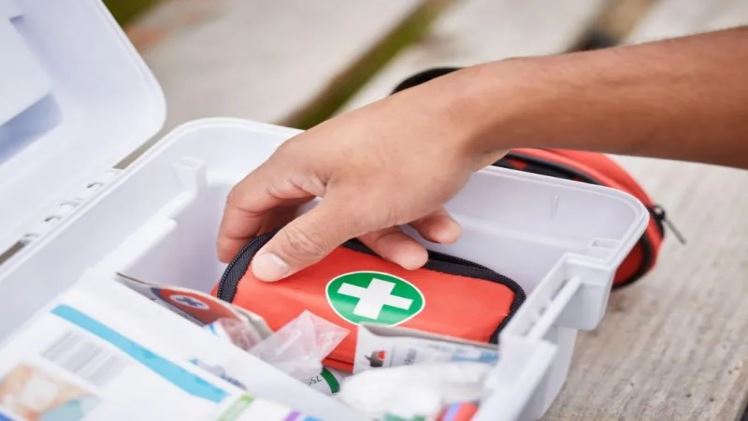Be Prepared: Building and Maintaining Your Home First Aid Kit

Emergencies can strike at any moment, turning a regular, comfortable day into chaos and uncertainty. Whether it’s a kitchen cut that needs immediate attention, a sprained ankle from an impromptu exercise session, or a fever that suddenly spikes in the middle of the night, being prepared at home can make all the difference. In this comprehensive guide, we will walk you through the essentials of building and maintaining a home first aid kit and First Aid Training Burnaby.
Understanding the Importance of a Home First Aid Kit
A Versatile Lifesaver
A home first aid kit is like a portable emergency room for common injuries and illnesses. It’s the first line of defense when a crisis occurs. It’s essential not only for minor incidents that just need a quick fix but also for the unforeseen times when professional medical help may be minutes away.
Providing Immediate Relief
Having a well-stocked first aid kit ensures that you can address injuries or health episodes immediately. Quick and appropriate response can prevent infections, soothe pain, and stabilize serious situations until professional help becomes available.
Building Your Home First Aid Kit
Choosing the Right Container
Start with a durable, portable container that closes tightly to keep items clean and ready for use. Organize supplies in clear, re-sealable bags or small containers within the kit. Be sure to label medications and indicate their expiration dates.
Stocking Up on Essentials
Your kit needs to have a variety of supplies to handle different situations efficiently. Here’s a detailed list of what your first aid kit should contain:
Basic Supplies
Adhesive bandages
Sterile gauze pads in various sizes
Adhesive tape
Scissors
Tweezers
Safety pins
Non-latex gloves
Hand sanitizer
Medications
Antiseptic solution or wipes
Antibiotic ointment
Hydrocortisone cream
Fever reducers (aspirin, ibuprofen, or acetaminophen)
Anti-diarrhea medication
Antacid
Oral rehydration salts
Allergy medication
Special Needs
Pre-packaged instant cold packs
Emergency dental repair kit
First aid manual
List of emergency phone numbers and medical history
Tailoring to Your Family’s Needs
Consider the ages and health conditions of your family members when stocking your kit. For example, if you have young children, include children’s versions of medications and add items like antiseptic ointment and a thermometer. If you have elderly family members, consider including extra items for their specific health needs, such as pain-relief patches or a small magnifying glass for reading medication instructions.
Maintaining Your Home First Aid Kit
Regularly Updating and Restocking
A first aid kit is not a ‘set it and forget it’ item. It needs regular attention to ensure that everything is still working and the contents are not expired. Set a schedule to check your kit every six months, rotate food and medication to account for expiration dates, and replace used or missing items.
Staying Informed and Trained
Having a first aid kit is great, but knowing how to use the items in it is equally important. Consider taking a first aid and CPR training course. Keeping your skills sharp ensures that when an emergency arises, you can act quickly and with confidence.
Adapting to Changing Needs
Families change, and so do their needs. It’s important to update your first aid kit as your family’s needs change. Add supplies if new health conditions arise, remove items that are no longer relevant, and modify the contents as your living situation changes (e.g., switching items for winter- or beach-implications, etc.).
Organizing Your Home First Aid Kit
A Place for Everything, and Everything in Its Place
Organize your kit so that everything is easily accessible. Group like items together and ensure that they are labeled effectively. Quick retrieval during an emergency can make a significant difference. Also, consider attaching a list of contents to the outside of the kit or keeping an inventory inside.
Proper Storage and Maintenance
Keep your kit in a cool, dry place out of the reach of children but accessible to adults. Store it away from heat and moisture, and check the batteries in any electronic devices such as flashlights or emergency radios that are part of the kit.
Controlled Accessibility
Make sure everyone in the family knows where the first aid kit is located. It should be easy to find in a recognizable location, but also out of the way of children and pets who might play with the contents.
The Psychological Impact of Accessibility
A Sense of Security
Knowing that you have a well-prepared first aid kit at home can provide a sense of security for the entire family. In the event of an emergency, it can be very comforting to have the tools you need to address the situation at your fingertips.
Reducing Stress
Emergencies are stressful. Having an accessible first aid kit can help reduce some of the stress. It ensures that you can respond quickly and effectively, without the added concern of hunting for supplies or making a last-minute trip to the store during an emergency.
Conclusion and Next Steps
Your home first aid kit is an essential component of your family’s emergency plan. It is the toolbox for managing sudden illnesses or injuries in a safe and effective manner. Regular maintenance, knowledge, and organization are key to ensuring its readiness when you need it most. Take the time to build a kit tailored to your family’s needs, and keep it updated. Remember, in an emergency, every second counts, and being prepared can make all the difference.


